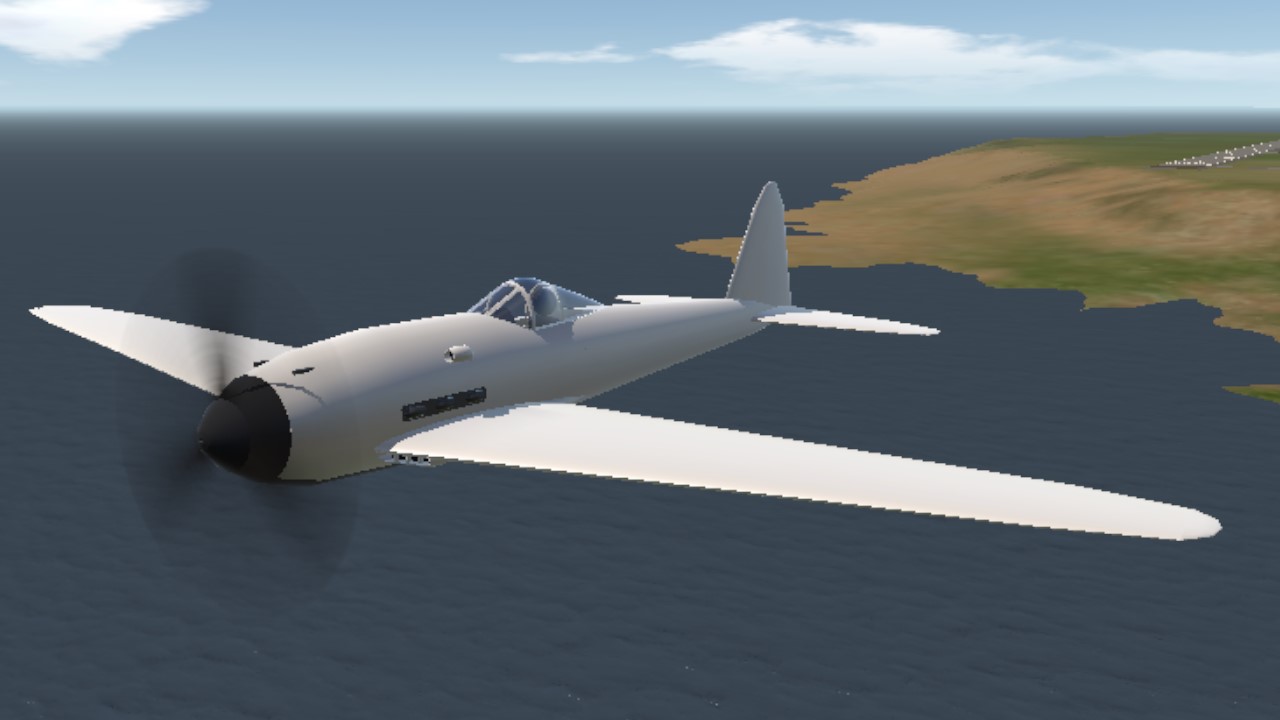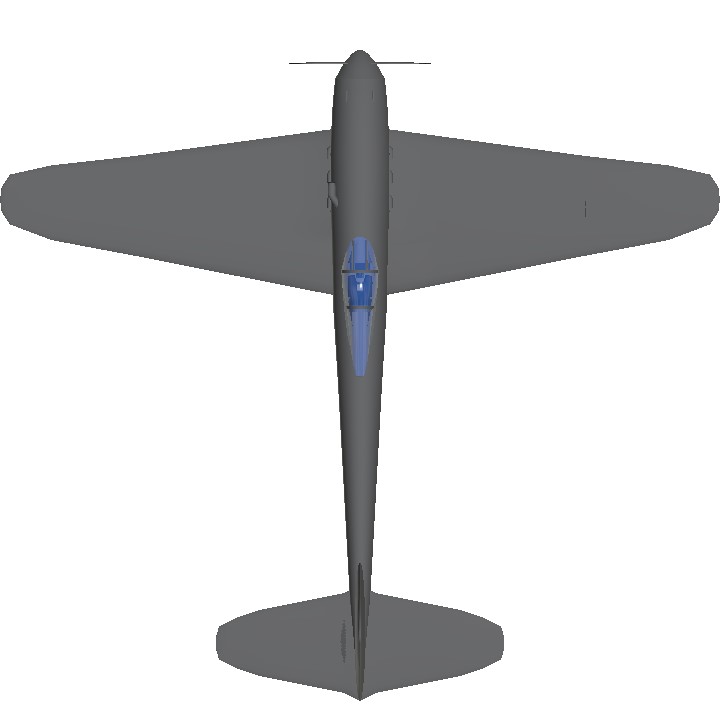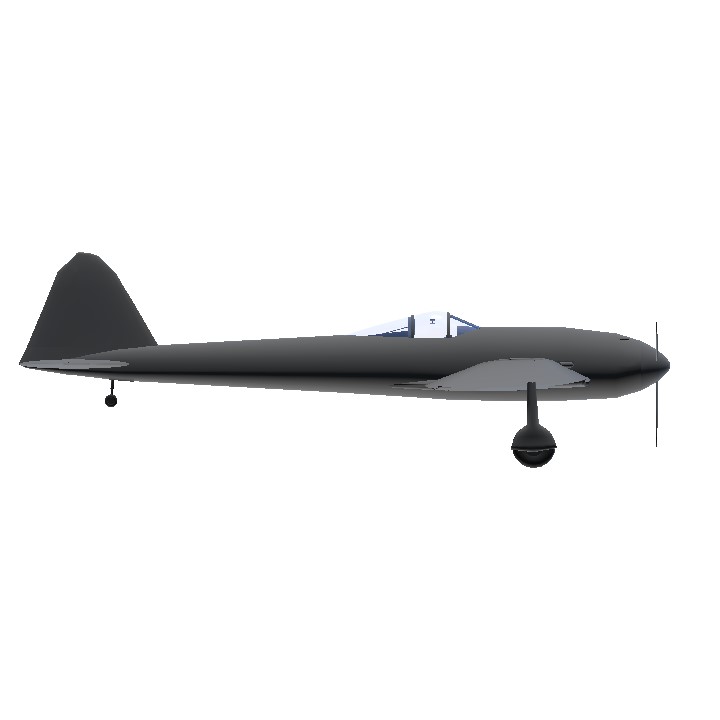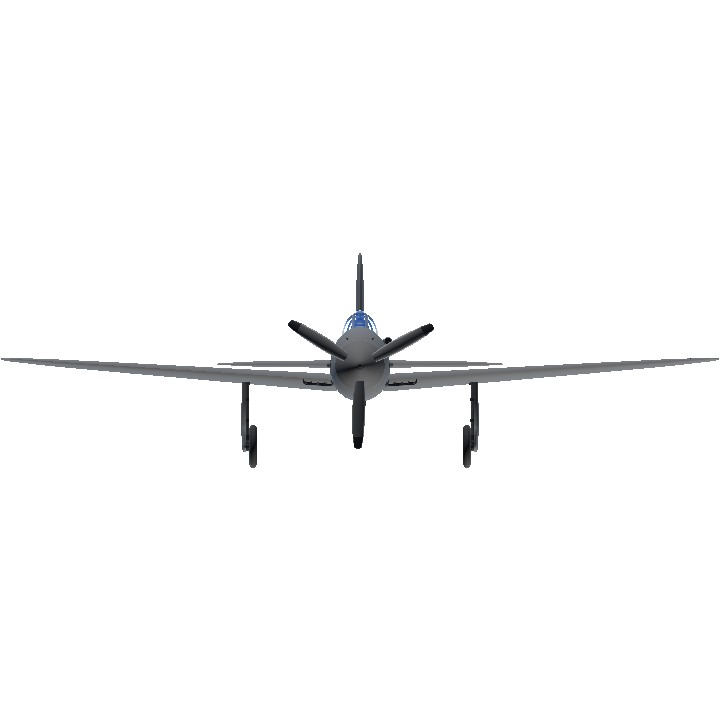Unfinished aircraft,Lacks details and functions
Sarkuva-Furkust Type.106 — Lore
Entry into Service: 15 August 1942
Role: Frontline / Interception Fighter
Manufacturer: Sarkuva-Furkust Aviation Works (SFAW)
Engine: ANB-1237 — 1237 hp inverted V12, driving a 3-blade constant-pitch propeller
Armament:
1× 23mm SSFd-23 cannon firing through the prop hub (60 rounds)
2× 12.3mm Db13-N machine cannons in the nose (1100 rounds each)
Performance: 667 km/h max speed | 7,600 m service ceiling
Handling Feature: Automatic leading edge slats providing up to 10° assisted pitch/roll authority at low speeds.
Design Philosophy
After repeated frontline combat reports showing the SF Type.19 was rapidly losing its performance edge in 1942, the High Command demanded a faster, tougher, and harder-hitting air superiority fighter. However, due to wartime production strain and technological setbacks, SFAW was forced to pursue pragmatic evolution instead of a clean-sheet design.
The Type.106 combined:
A newly refined, high-output inverted V12 engine based off pre-war ANB architecture.
A slim, low-frontal-area fuselage prioritizing speed.
Heavy nose armament designed to break apart armored strike planes and diving fast attackers.
The large nose arrangement required shifting the cockpit farther rearward. This improved aerodynamic balance — but came at the cost of terrible rearward visibility. Pilots often complained that the Type.106 “flies with a blind ghost behind you.”
In Combat
The Type.106 proved itself immediately as a fast-climbing interceptor against:
High-speed reconnaissance aircraft
Bomber raiders
Enemy strike fighters
The 23mm hub cannon was praised — when it hit, it ended fights instantly. However, its limited 60-round ammunition drum meant experienced pilots often saved it for snap shots or final kill strikes.
The twin 12.3mm nose guns, by contrast, could fire nearly continuously and provided excellent gunnery harmonization.
Strengths
✔ High top speed for mid-1942 combat
✔ Superb climb and acceleration at medium altitude
✔ Strong roll and pitch stability due to leading-edge slats
✔ Devastating concentrated nose firepower
Weaknesses
✖ Rearward visibility was notoriously awful
✖ Ammunition restraint required discipline
✖ High-speed dives were stable, but recovery required force due to aft mass balance
✖ Tight-turn engagements were considered too risky
Pilot Reputation
Among pilots, the Type.106 earned the nickname:
“The White Blade”
(Because pilots said it “strikes fast and clean, but leaves you exposed if you hesitate.”)
It favored:
Aggression
Vertical maneuvering
Energy retention
Pilots who tried to turnfight lighter enemy aircraft often did not return. The training manuals emphasized:
“You do not chase. You strike and climb.”
Specifications
General Characteristics
- Created On Android
- Wingspan 35.6ft (10.8m)
- Length 33.8ft (10.3m)
- Height 10.6ft (3.2m)
- Empty Weight 5,393lbs (2,446kg)
- Loaded Weight 7,088lbs (3,215kg)
Performance
- Horse Power/Weight Ratio 0.174
- Wing Loading 30.4lbs/ft2 (148.3kg/m2)
- Wing Area 233.4ft2 (21.7m2)
- Drag Points 1009
Parts
- Number of Parts 227
- Control Surfaces 7
- Performance Cost 1,066





I like this